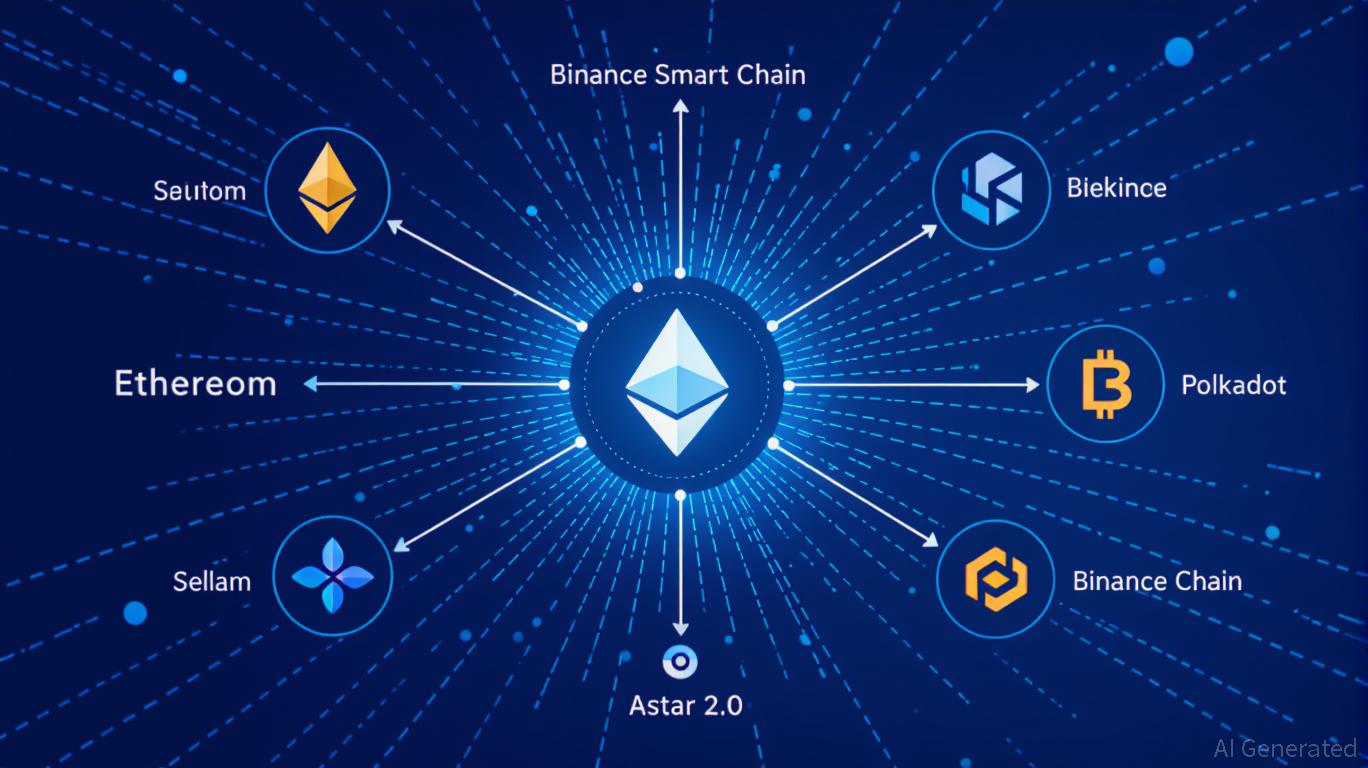As traditional banks pull back, Tether rapidly steps in to meet the demand for commodity lending, offering both swift action and significant capacity
- Tether plans to expand commodity lending with $1.5B in credit, using $200B reserves to enter high-yield trade finance. - The move fills a void left by traditional banks, offering faster loans in minutes via USD and USDT, targeting emerging markets. - Hiring HSBC experts and leveraging gold reserves, Tether aims to bridge traditional and digital assets through its gold-backed token.
The stablecoin powerhouse
This commodities lending initiative operates under Tether’s Trade Finance division, which was established in 2022, and is kept separate from the reserves backing its stablecoins. Ardoino highlighted that the company’s financial strength, fueled by interest from Treasury bills and other liquid investments, enables it to rival traditional banks in a market where smaller traders often struggle to secure credit. “We’re planning a major expansion,” he stated, adding that the team is “extremely optimistic” about the project’s prospects.
Tether’s move into commodity finance is partly a response to the gap left by conventional lenders. In recent years, banks have reduced their exposure to riskier markets due to stricter regulations and several notable defaults. As a result, smaller commodity traders, who lack access to large institutional credit, are facing tighter liquidity.

This approach is part of Tether’s broader effort to diversify beyond stablecoins. The company now holds one of the world’s largest private gold reserves, with over $12 billion in physical gold as of September 2025.
Tether’s push into commodity lending also reflects its confidence in the short-term, high-turnover nature of trade finance. Unlike long-term loans, commodity credit is usually repaid within weeks as goods are shipped and sold, allowing for rapid returns. For instance, shipping wheat or oil often takes less than a month, enabling Tether to quickly recover its funds. This model differs from that of traditional banks, which typically require extensive checks and collateral.
Regulatory oversight continues to be a hurdle, as Tether’s financial statements are not audited. Nevertheless, Ardoino anticipates $15 billion in profits for 2025, mainly from interest on its reserves. The company has also faced scrutiny over the transparency of its gold assets, though it asserts that its holdings are fully backed and regularly verified.
Experts in the industry believe Tether’s expansion could reshape the commodity trading sector. By offering attractive rates and utilizing its stablecoin infrastructure, Tether may appeal to traders seeking quicker access to funding. Additionally, the use of USDT in lending could drive greater adoption of the token in developing markets, where dollar liquidity is essential but banking services are limited.
As Tether grows its commodity lending business, it must balance the risks of volatile markets with the need to uphold its reputation for reliability. Success in this area could further establish Tether as a key link between traditional finance and digital assets, reinforcing its leadership in the stablecoin industry.
---
Disclaimer: The content of this article solely reflects the author's opinion and does not represent the platform in any capacity. This article is not intended to serve as a reference for making investment decisions.
You may also like
Bitcoin News Update: CFTC's Broader Role in Crypto Regulation Ignites Discussion on Clearer Rules
- U.S. lawmakers propose expanding CFTC's crypto oversight via a bill reclassifying spot trading, diverging from SEC's enforcement approach. - Harvard University invests $443M in BlackRock's IBIT ETF, reflecting institutional confidence in crypto as a legitimate asset class. - DeFi projects like Mutuum Finance raise $18.7M in presales, leveraging regulatory momentum and transparent on-chain credit systems. - RockToken's infrastructure-backed crypto contracts attract long-term investors with structured yiel

DASH Aster DEX's Latest On-Chain Growth and What It Means for DeFi Liquidity
- DASH Aster DEX leads 2025 DeFi shift with hybrid AMM-CEX model and multi-chain support (BNB, Ethereum , Solana), boosting TVL to $1.399B and Q3 daily trading volumes of $27.7B. - Platform's 1,650% ASTER token price surge post-TGE attracted 330,000 new wallets, with 94% of BSC-USD volume ($2B/day) driving institutional adoption via Binance/YZi partnerships. - ASTER token mechanics enable 80% margin trading, 5-7% staking rewards, and governance rights, while annual 5-7% fee burns create scarcity and align

Astar 2.0: Leading a New Generation of DeFi and Cross-Chain Advancements
- Astar 2.0 introduces a zkEVM mainnet and cross-chain interoperability, slashing gas fees and enabling 150,000 TPS with 2025 scalability goals. - Strategic partnerships with Mazda, Japan Airlines, and Sony demonstrate blockchain's real-world applications in logistics, loyalty programs, and digital asset tokenization. - Q3 2025 data shows $2.38M DeFi TVL growth and 20% active wallet increase, alongside a $3.16M institutional ASTR token acquisition. - The platform aims to solidify its role as a foundational

Aster DEX Introduces New On-Ramp: Transforming Retail Participation in DeFi
- Aster DEX integrates institutional-grade custody and privacy tech (zero-knowledge proofs) to bridge retail-institutional DeFi gaps via BNB Chain partnerships. - TVL surged to $2.18B by late 2025 through yield-bearing stablecoins and hidden orders, attracting both retail and institutional liquidity. - Despite compliance gaps and wash trading concerns, Aster's Binance alignment and Coinbase listing signals growing institutional validation.
